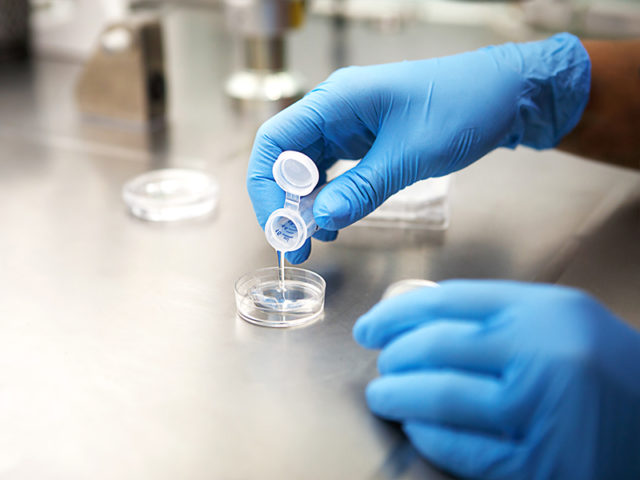If you’ve seen Kareena Kapoor and Akshay Kumar’s movie Good Newwz, you may feel a little more comfortable and informed about IVF as a fertility treatment. Though the light-hearted Bollywood flick was the first to bring this topic into mainstream cinema, it’s vital to know all the intricate details of these procedures. Most Indian couples who get IVF feel uncomfortable acknowledging assisted pregnancy due to societal pressure. However, the choice to have a baby or not, when and how to have it depends on the couple and there is nothing wrong with any of the choices.
There are many families, and couples that have difficulty in conceiving and opting for fertility treatments. IVF, ICSI and IUI are the most common ways that can help you have a baby, but they’re very different fertility treatments. Here is a brief explanation of the three treatments.
What Is IVF, ICSI & IUI?
1. In-Vitro Fertilisation or IVF
In Vitro Fertilisation (IVF) describes a technique where a woman’s eggs and a man’s sperm are combined in a special laboratory in order to create an embryo(s). Depending on the diagnosis of the woman, an embryo or embryos are transferred to the woman’s uterus through her cervix to enhance the chances of pregnancy. Here are 8 vital facts to remember when getting an IVF, especially during the pandemic.
2. Intracytoplasmic Sperm Injection or ICSI
ICSI is a type of in-vitro fertilisation procedure in which a single sperm cell is injected into the cytoplasm of the egg. It is a technique that is used to prepare the gametes in order to obtain the embryos that may be transferred to a maternal uterus, thus encouraging pregnancy. Click here to know more about ICSI treatments.
3. Intrauterine Insemination or IUI
IUI is short for Intrauterine Insemination. It involves inserting your partner’s sperm – or donor sperm – into your uterus at the time you are ovulating, in the hope the egg is fertilised for pregnancy. Click here to learn more about IUI treatments in India.
Who Is A Good Candidate For The Treatment?
1. IVF is designed to overcome issues that prevent sperm from fertilising an egg in the body, such as fallopian tube damage or blockages. It may be advised in some cases of unexplained infertility, or in mild cases of male infertility. Here is everything you need to know about IVF treatments in India.
2. ICSI is a treatment designed to overcome male fertility issues, such as low sperm count or poor sperm mobility, which prevents sperm from fertilising the egg naturally. It’s also used for surgically retrieved sperm, or for men whose sperm has high levels of DNA damage. If sperm issues aren’t the cause of your fertility problems, IVF would normally be recommended instead.
3. Many patients who need donor sperm to conceive choose IUI as it can be a quick, simple way to try to achieve pregnancy. For IUI to work, fallopian tubes must be clear, there must be enough healthy sperm and a mature egg to fertilise. If you have irregular ovulation, you can use fertility drugs in combination with IUI. Otherwise, IVF may be advised instead.
What To Expect When You Are Having The Procedures
1. The Procedure For IVF
Techniques may differ depending on the clinic, but IVF usually involves the following steps:
1. Suppressing The Natural Menstrual Cycle:
The woman receives a drug, usually in the form of a daily injection for about 2 weeks, to suppress their natural menstrual cycle.
2. Superovulation:
Fertility drugs containing the fertility hormone, follicle-stimulating hormone (FSH) are given to the woman. FSH makes the ovaries produce more eggs than usual. Vaginal ultrasound scans can monitor the process in the ovaries.
3. Retrieving The Eggs:
The eggs are collected through a minor surgical procedure known as ‘follicular aspiration.’ A very thin needle is inserted through the vagina and into an ovary. The needle is which is connected to a suction device. This sucks the eggs out. This process is repeated for each ovary. Frozen or donated eggs may also be used.
4. Insemination And Fertilisation:
The eggs that have been collected are placed together with male sperm and kept in an environmentally controlled chamber. After a few hours, the sperm should enter the egg. Sometimes the sperm is directly injected into the egg. This is known as an intracytoplasmic sperm injection (ICSI). The fertilised egg divides and becomes an embryo. Later one or two of the best embryos are selected for transfer. The woman is then given progesterone or human chorionic gonadotrophin (hCG) to help the lining of the womb receive the embryo.
5. Embryo Transfer:
Sometimes, more than one embryo is placed in the womb. It is important that the doctor and the couple wishing to have a child discuss how many embryos should be transferred. Normally, a doctor will only transfer more than one embryo if no ideal embryos are available. The transfer of the embryo is done using a thin tube, or catheter. It enters the womb through the vagina. When the embryo sticks to the lining of the womb, healthy embryo growth can begin.
2. The Process For ICSI
The ICSI procedure is a 5-step process that consists of sperm collection, egg collection, sperm injection, observation and implantation.
1. Sperm Collection:
A semen sample is retrieved from the male partner. This can be collected organically or through a surgical testicular process.
2. Egg Collection:
Once the semen sample is collected, a selection of mature eggs is collected surgically from the female partner.
3. Sperm Injection:
Here, a single sperm cell is injected into a healthy egg using a hollow needle to induce fertilisation.
4. Observation:
Once the egg is fertilised, it becomes an embryo. The embryo is cultured in a laboratory for up to 5 days.
5. Implantation:
The embryo, which is now 4-5 days old, is transferred to the uterus. After a few days, it embeds itself into the uterine lining. This process is known as implantation.
In the ICSI procedure, a tiny needle called the micropipette is used to inject a single sperm into the centre of the egg. With either traditional IVF or ICSI the fertilised egg, now called the embryo, is kept in a laboratory for 1-5 days before it is transferred into the woman’s womb.
3. The Procedure For IUI
The procedure of IUI is simple. It entails:
- Selection and counselling
- Ovarian stimulation
- Monitoring of follicular growth and endometrial development
- Timing of insemination is planned ~ 36 hours after the trigger injection
- Sperm preparation
- Insemination
On the day of the planned IUI, an ovulation check is done, following which the partner’s semen sample is collected, analysed and processed. Once the sample is prepared, the female partner is positioned, and the insemination is done using a thin catheter into the uterus. A short period of rest is given following which the patient is free to go home.
Potential Risks Factors
1. Risks In Getting An IVF
- Multiple births
- Premature delivery and low birth weight
- Ovarian hyperstimulation syndrome
- Miscarriage
- Egg-retrieval procedure complications
- Ectopic pregnancy
- Birth defects
- Cancer
- The use of IVF can be financially, physically and emotionally draining so it can cause stress
2. Risks In Getting An ICSI
ICSI can increase the success rates of IVF, but the procedure comes with considerable risks.
- Damage to embryos
- Becoming pregnant with multiple
- Birth defects: The ICSI risk of having a baby with abnormalities is very minimal (less than 1%)
- Studies have shown miscarriages can happen in the first trimester following ICSI for women over the maternal age of 31 and/or in the presence of tubal block.
3. Risks In Getting An IUI
IUI is a low-risk procedure, most complications are associated with ovulation induction such as multiple pregnancies and OHSS.
What Is The Best?
Although IVF or In-Vitro Fertilisation has proven to be more successful than the rest, each fertility treatment depends on the couple and their health. Based on the body checkup, the doctor will be able to suggest a proper treatment plan. And it is crucial to remember that not all fertility treatments deliver a 100% success rate.
Apart from the above three, the other fertility options or plans to have a baby include surrogacy or adoption. If the fertility options fail, you must keep your hopes up and options open.

